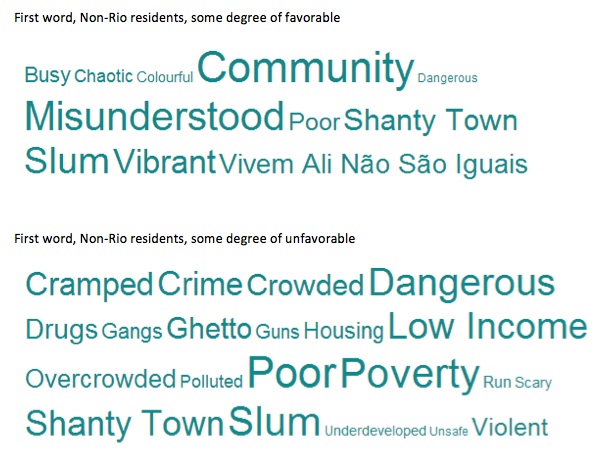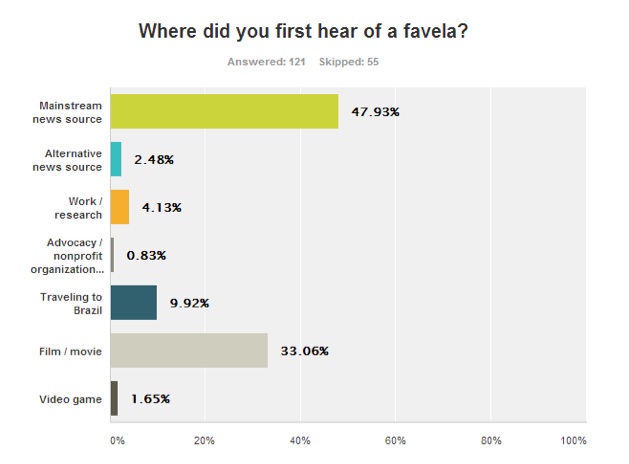Perceptions Survey
When people think of a “favela,” what comes to mind? From 2011-2013, Catalytic Communities organized an international Favela Perceptions Survey, where people in major metropolitan areas around the world are interviewed near mass transit stops regarding their views of Rio’s favela neighborhoods. Building on a small sample in 2011 and the 2012 pilot study, in April and May of 2013, CatComm volunteers surveyed over 750 people in four cities–Rio de Janeiro, San Francisco, Brisbane, and London—to discover how ordinary people perceive favela communities and their residents. Across all four locations, one finding in particular stood out loud and clear: those who had visited a favela personally held dramatically more positive views of favelas than otherwise, and the results are statistically significant (p value < .002).
With respect to those who answered the survey, most non-Rio residents had heard of favelas before (63%). However, of those who had never been to a favela, only 14% had a “favorable” perception of favelas; most held an “unfavorable” opinion of them (64%). With respect to favela residents, most people who had never visited a favela had a neutral perception of those who live in favela communities (65%).
In contrast, respondents who had personally visited a favela held quite different views. Of non-Rio residents who had been to a favela, 44% had a favorable perception of those neighborhoods, and 27% were neutral—leaving only 29% with a decidedly unfavorable impression of favelas. Further, 71% of those who had been to a favela had a positive view of favela residents. It is also interesting to note that for respondents who had visited a favela, most (82%) did not go as part of a favela tour.

What might drive those who had never visited a favela to hold such negative perceptions of them? The survey data indicate no significant difference in respondents with respect to the city in which they were interviewed, age, gender, or level of educational attainment. However, differences in preferred news sources may provide some insight. Nearly half of non-Rio respondents with negative perceptions of favelas first heard of them through a mainstream news source (48%), followed by films or movies (33%). While many of those who held positive views of favelas first heard of them through mainstream news sources as well (18%), a larger portion of those with positive impressions first heard of favelas through traveling to Brazil (30%). In addition, seven percent of those with positive views first heard of favelas through advocacy or nonprofit organizations (NGOs), while less than one percent of those with negative views of favelas first heard of them through NGOs.
The 2013 results discussed above corroborated the findings of the 2012 Favela Perceptions Survey, in which over 300 North Americans and 325 Brazilians were interviewed. Results indicate at least one consistent finding: the more people acquire first-hand knowledge of favelas—either from visiting one themselves, or by reading news produced by favela residents—the more perceptions of favela neighborhoods change for the better.
Non-Rio residents with a favorable impression of favelas respond:
Non-Rio residents with an unfavorable impression of favelas respond:

Research study organized by and compiled by Dr. Wendy Muse Sinek, Instructor/Program Coordinator, Office of Undergraduate Research, Department of Undergraduate and Interdisciplinary Studies, UC-Berkeley.

